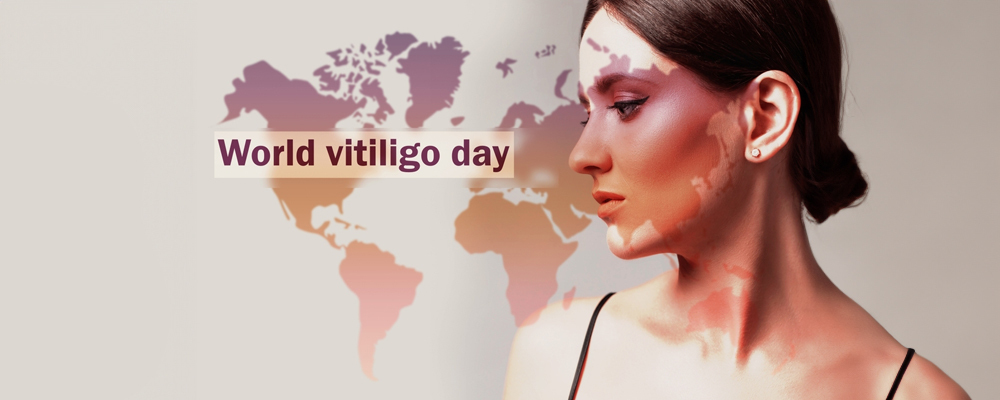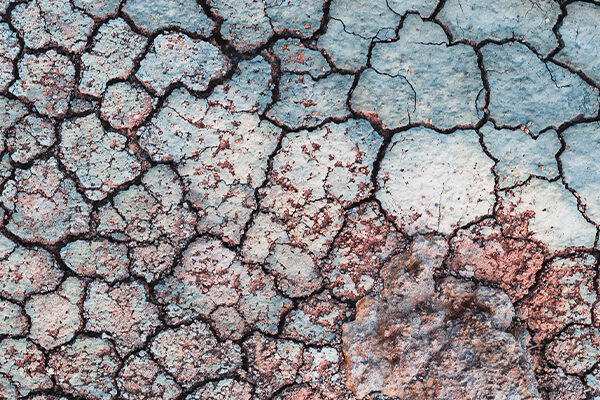Updated on August 18, 2025

Every year on June 25th, World Vitiligo Day is observed to put in efforts for individuals with vitiligo, and to raise awareness regarding the social stigma and mental challenges faced by those impacted by the condition.
Like every year, let’s take World Vitiligo Day 2024, to talk about this skin condition and help raise awareness about potential treatment options.
Vitiligo is a skin disorder marked by the destruction of melanocytes; the skin cells responsible for producing melanin. This may lead to the loss of skin color, resulting in whitish, smooth patches on the skin. It affects approximately 2% of the global population, however, it can occur across all genders and ethnicities and typically affects individuals between the ages of 20 and 30.
History of World Vitiligo Day 2024 – What You Need to Know
Back in 2011, the inaugural World Vitiligo Day was initiated by the non-profit organization VR Foundation. The idea was to raise awareness about vitiligo and debunk myths, since it was a largely misunderstood condition with a profound impact on the self-esteem of those affected.
Moreover, the reason why World Vitiligo Day is specifically on 25th of June holds great significance. It was selected by Yan Valle, CEO of The Vitiligo Research Foundation, to honor the passing of Michael Jackson, who battled vitiligo.
Hence, this date serves as an opportunity to dedicate a day to shed light on vitiligo and its challenges.
Ever since its inception, the efforts have been consistently directed towards recognizing June 25th as World Vitiligo Day by the United Nations. The idea is to provide a broader platform particularly designed for vitiligo, to facilitate greater global outreach and awareness about the condition.
Also Read: Celiac Disease and Vitiligo: Is There a Connection?
What Are the Causes of Vitiligo?
The exact cause of vitiligo remains quite unclear, but some studies suggest that genetics may play a role in the development of vitiligo. Furthermore, researchers continue to investigate various factors known to contribute to the onset and progression of vitiligo, including environmental and genetic factors.
Also Read: Is Vitiligo Considered a Disability?
What Are the Risk Factors of Vitiligo?
The risk factors for vitiligo include:
- Genetic Factors: Family history has been known to play a crucial role in about 30% of vitiligo cases, indicating a genetic predisposition to the condition.
- Neurogenic Factors: Nerve endings present in the skin may release some toxins that may damage melanocytes, contributing to the development of vitiligo.
- Destruction of Melanocytes: Defects within melanocytes themselves can result in their self-destruction, further elevating the loss of pigment in the skin.
- Autoimmune Disorders: Individuals with vitiligo often have an underlying autoimmune condition, where the immune system mistakenly attacks and destroys melanocytes, the pigment-producing cells.
Also Read: Vitiligo and Diabetes: Understanding the Connection
What are the Symptoms of Vitiligo?
Symptoms of vitiligo may typically include:
- Itching which occur in affected areas
- Loss of pigment in various parts of the body, resulting in white patches
- Discoloration of mucous membranes, such as the lining inside the nose and mouth
- Loss of discoloration of the retina, the inner lining of the eyeball
- Premature whitening of the hair, on the scalp, beard, eyebrows or eyelashes
Treatment Options for Vitiligo
Several treatment options have known to be effective for vitiligo symptom management, including:
| Topical Corticosteroids | Anti-inflammatory creams or ointments applied to affected areas to help restore pigment, especially effective for small patches of vitiligo. |
| Phototherapy | Narrowband ultraviolet B (UVB) light therapy can help slow the progression of vitiligo and sometimes restore color to depigmented areas. |
| Skin Grafting | A surgical procedure where small sections of healthy, pigmented skin are transplanted to areas with vitiligo to promote re-pigmentation. |
| Depigmentation Therapy | For individuals with extensive vitiligo, this involves applying a depigmenting agent like monobenzone to the remaining pigmented skin to create a more uniform skin tone by lighting it to match the affected areas. |
Supporting World Vitiligo Day 2024: Ensuring Diversity in Vitiligo Research
Revival is committed to ensuring diversity in vitiligo research, recognizing that the inclusion of racial and ethnic minorities is crucial for the effectiveness of finding new treatments that will eventually lead to a cure.
Certain skin conditions, including vitiligo, can manifest differently among various ethnic groups. Without equal representation in research, findings may not accurately reflect the condition’s impact across different ethnic groups. Therefore, achieving equal representation among all racial and ethnic groups is vital for the success and accuracy of clinical research in vitiligo.
How to Get Involved in Raising World Vitiligo Day Awareness?
Here are a few ways to successfully get involved in raising awareness about World Vitiligo Day 2024.
- Be a Skin Advocate: All marks are beautiful, even with that being said, there must be acceptance for diverse skin conditions and a sense of belonging for those affected with the condition.
- Participate in Awareness Initiatives: Utilize this World Vitiligo Day 2024 as a medium to promote vitiligo research and boost the self-esteem of those affected with the condition.
- Expand Knowledge and Spread Awareness: Educate others about this condition by sharing accurate information from reliable sources such as leading clinical research organizations.
- Support Vitiligo Research: Contribute through participation in vitiligo research dedicated to working towards debunking myths and finding potential cure.
World Vitiligo Day 2024: The Takeaway
In summary, World Vitiligo Day 2024 presents an opportunity to raise awareness, back research efforts, and showcase a sense of acceptance and empathy toward individuals with the condition. It is essential to acknowledge that even small steps taken toward acceptance of the diverse skin condition can make a significant impact.





